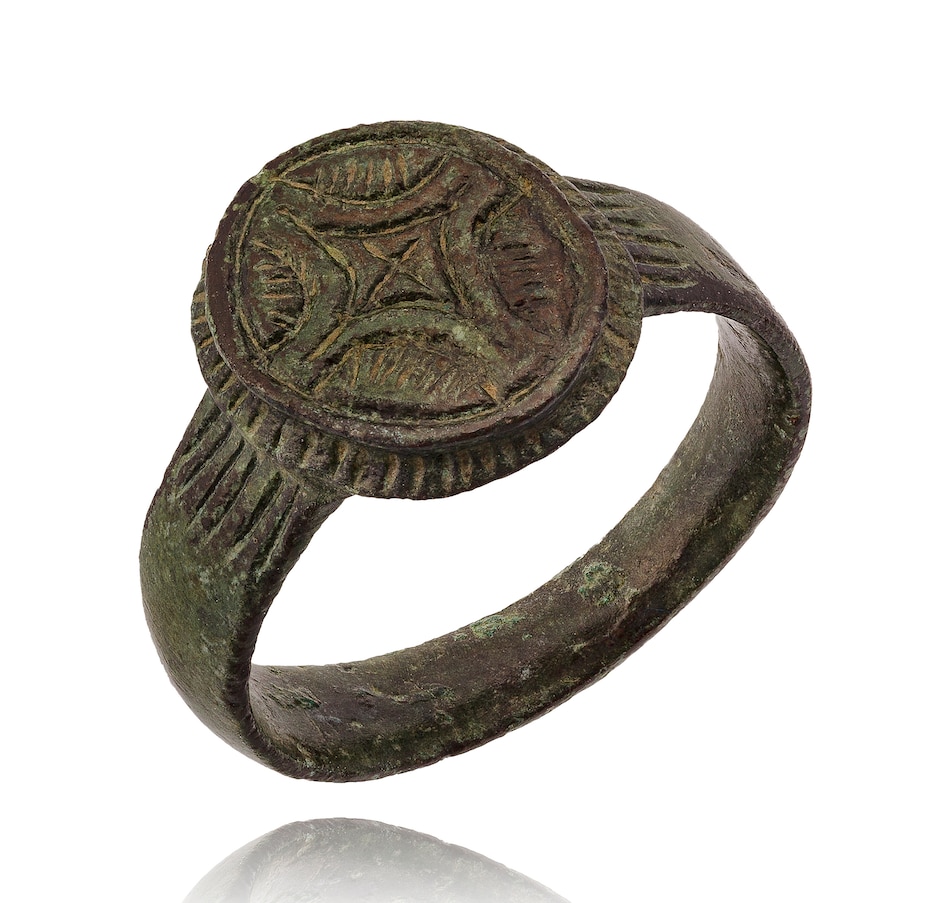Museum-Quality Byzantine Signet Ring, circa 100 BCE–400 CE
Free Shipping
Product Overview
This is an attractive, museum-quality original example of a bronze finger ring dating from the Byzantine Empire, circa 330 CE to 1453 CE. Finger rings were commonly worn through antiquity and into the Middle Ages. While gold and silver were worn by the wealthy, the ordinary citizens of the Byzantine Empire wore rings made of brass or bronze. A certificate of authenticity is included with this artifact, as well as a comprehensive book entitled Rings for the Finger, which traces the history of finger rings from ancient times to modern, and provides additional insight and background on the signet ring.
Apart from personal adornment, early signet rings were also functional. They were used as a form of personal identification much like a signature would be used today. Lead or wax would be melted and dripped onto a surface, then the signet ring was impressed onto it. As literacy spread throughout the empire, this functional role diminished in importance except for ceremonial purposes; however, the signet ring continued to be used as a personal adornment.
About the Byzantine Empire
Following the steady technological, social and philosophical advancements of Ancient Greece and the golden days of the Roman Empire, the Western world entered into an era of regression starting with the fragmenting of the Roman Empire in the fifth century CE. By the sixth century CE, the area that was Ancient Rome had become what we now call the Byzantine Empire. The empire continued to ebb and flow in a wave of decline and recovery for a millennium after the disjunction of the Western Roman Empire, until it crumbled to the Ottoman Turks in 1453. While many of the inhabitants of the Byzantine Empire would have considered themselves to be Roman, modern history refers to this era as Byzantine.
Includes:
• Museum-Quality Byzantine Signet Ring, circa 100 BCE–400 CE
Warranty Information:
This product comes with a 30-day warranty through TSC.








